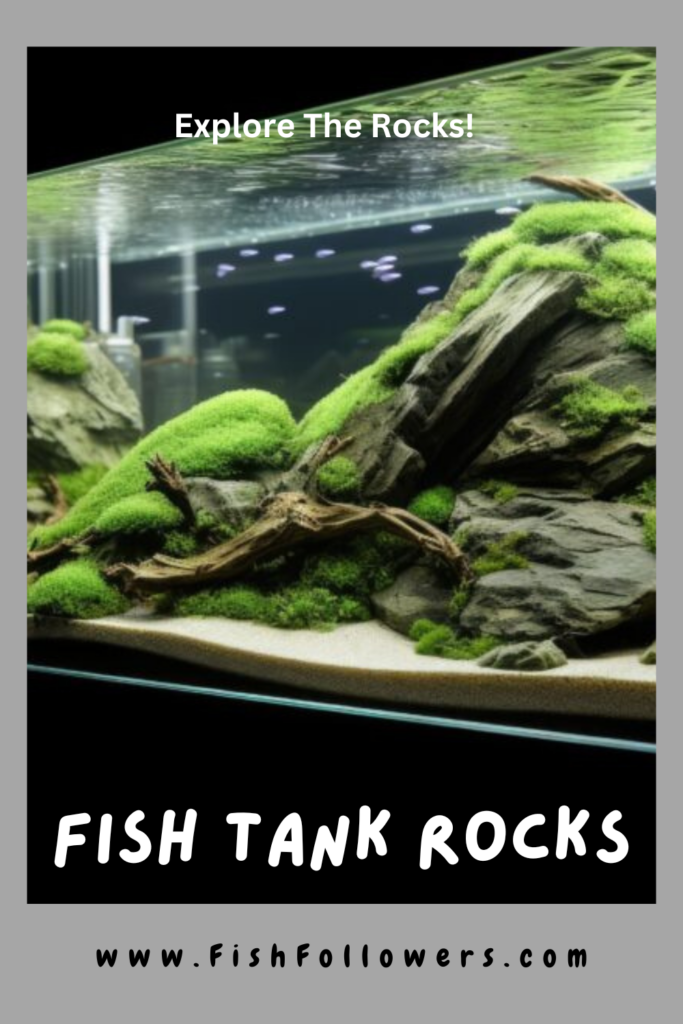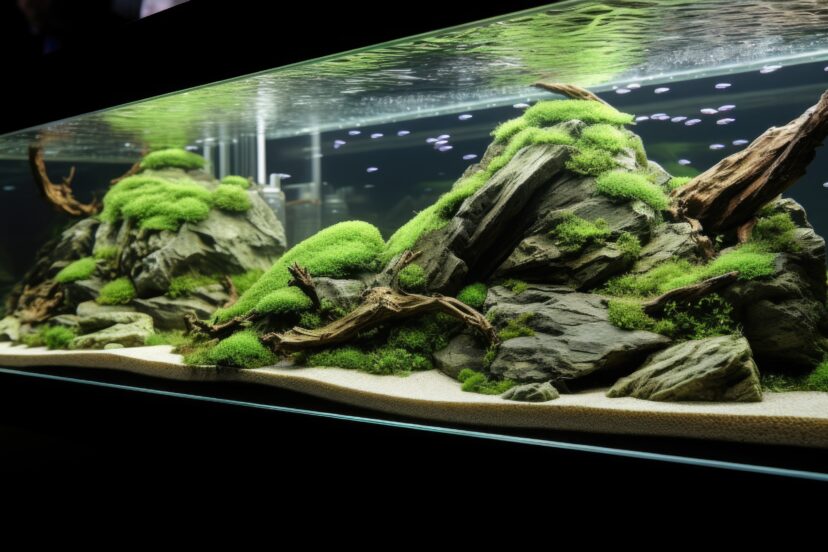Fish Tank Rocks! Explore The Rocks!
As an avid fish guy, (as a matter of fact, I have been called Rich- Rich The Fish Guy) I’ve come to realize that the foundation of any great aquarium lies not just in the fish we choose, but also in the environment we create for them. One often overlooked aspect of this underwater world is the choice of rocks and gravel. These seemingly simple elements play a crucial role in both the aesthetics and functionality of our aquariums. In this article, I’ll share my insights on fish tank rocks, helping you make informed decisions for your aquatic paradise.
Types of Fish Tank Rocks
When it comes to selecting rocks for your fish tank, the options can seem overwhelming. Let’s break down the most common types you’ll encounter:
Gravel
Gravel is the go-to substrate for many aquarists, myself included. It’s versatile, affordable, and comes in a variety of colors and sizes. I’ve found that smaller gravel, about 2-5mm in size, works well for most freshwater tanks. It’s easy for beneficial bacteria to colonize and allows for effective waste filtration.
For those looking for a natural look, I recommend checking out CaribSea Eco-Complete. It’s a nutrient-rich substrate that’s perfect for planted tanks and comes in a beautiful black color that makes fish colors pop.
Pebbles
Pebbles are larger than gravel and can create a striking visual effect in your tank. They’re smooth and rounded, making them safe for bottom-dwelling fish. I love using pebbles to create focal points or to line the edges of my tank for a more natural look.
One of my favorite pebble products is the Estes Spectrastone Shallow Creek Regular. These pebbles come in a mix of natural colors and are perfect for creating a river-bed effect.
River Rocks
River rocks are larger, smoother stones that can add a touch of nature to your aquarium. They’re great for creating hiding spots for shy fish or for building up levels in your tank landscape. Just be careful not to stack them too high, as they can be quite heavy. As a matter of fact, that is one reason that I like to order them on-line. They just show up at my door. Check these out.
Lava Rocks
Lava rocks are a unique option that I’ve grown fond of over the years. They’re lightweight, porous, and excellent for biological filtration. Their unique texture also provides a great surface for beneficial bacteria to thrive. Plus, they look fantastic in both freshwater and marine setups.
I’ve had great success with Fluval Biomax Bio Rings. While not traditional lava rocks, these ceramic rings serve a similar purpose and are excellent for biological filtration in canister filters.
Choosing the Right Rocks for Your Aquarium
Selecting the perfect rocks for your fish tank isn’t just about aesthetics. Here are some factors I always consider:
- Considering Fish Species- Different fish have different needs. Bottom-dwellers like Corydoras catfish prefer fine, smooth substrates that won’t harm their sensitive barbels. On the other hand, cichlids from Lake Malawi love to dig, so larger, heavier rocks are ideal to prevent them from constantly rearranging your aquascape.
- Tank Size and Aesthetics- The size of your tank will influence your rock choices. In smaller tanks, I tend to use smaller rocks and gravel to maintain a sense of scale. For larger tanks, a mix of sizes can create a more dynamic and natural-looking environment.
- Water Chemistry Impact- This is crucial and often overlooked. Some rocks can alter your water chemistry, which can be either beneficial or detrimental depending on your fish species. For instance, limestone can increase water hardness and pH, which is great for African cichlids but not ideal for soft water species.
I always recommend testing any rocks you’re unsure about. Place them in a bucket of water for a week and test the pH and hardness before and after. This simple step can save you a lot of headaches down the line.
Benefits of Using Rocks in Fish Tanks
Rocks aren’t just for show. They serve several important functions in your aquarium:
- Biological Filtration- Rocks, especially porous ones like lava rocks, provide an excellent surface area for beneficial bacteria to colonize. These bacteria are crucial for breaking down harmful ammonia and nitrites in your tank.
- Natural Habitat Simulation- By carefully selecting and arranging rocks, we can create environments that mimic our fish’s natural habitats. This not only looks great but can also reduce stress in your fish, encouraging natural behaviors and even breeding.
- Aesthetic Appeal- Let’s face it, a well-designed rock layout can transform your tank from a simple fish container to a stunning underwater landscape. I’ve spent hours arranging rocks to create caves, overhangs, and focal points that make my tanks true living works of art.
How to Prepare and Place Rocks in Your Aquarium
Proper preparation and placement of rocks is crucial for the health and safety of your aquatic friends:
- Cleaning and Sterilizing- Never add rocks straight from the outdoors to your tank. I always boil rocks for about 15-20 minutes to kill any harmful bacteria or parasites. For larger rocks, I scrub them thoroughly with a clean brush (no soap!) and rinse well with hot water.
- Proper Placement Techniques- When placing rocks, always start with the largest ones first. Ensure they’re stable and won’t topple if fish swim into them. I like to use egg crate (light diffuser panels) under large rock structures to distribute weight and protect the tank bottom.
- Creating Depth and Texture- Use rocks of varying sizes to create depth and texture in your aquascape. I often slope the substrate from back to front, using larger rocks at the back and smaller ones in the foreground to create perspective.
Maintenance and Care of Fish Tank Rocks
Keeping your rocks clean is essential for a healthy aquarium:
Regular Cleaning Routines
During water changes, I gently siphon debris from around the rocks. For gravel, a good vacuuming every couple of weeks helps remove built-up waste.
Replacing or Rearranging Fish Tank Rocks
Don’t be afraid to switch things up occasionally. Rearranging rocks can provide new and exciting environments for your fish. Just be careful not to disturb too much beneficial bacteria in the process.
Popular Rock Products for Fish Tanks
Here are some of my top picks for aquarium rocks:
Top Gravel Choices
- Seachem Flourite Black Clay Gravel: This is my go-to for planted tanks. It’s rich in iron and great for plant growth.
- Carib Sea Super Naturals Aquarium Sand: For a more natural look, this sand comes in various colors and grain sizes.

Decorative Rock Options
- Lifegard Aquatics Dragon Stone: These uniquely shaped rocks are perfect for creating dramatic aquascapes.
- Underwater Galleries Cichlid Stones: These artificial rocks are lightweight and perfect for African cichlid tanks.
Choosing the right rocks for your fish tank is an exciting part of the aquarium hobby. It’s a chance to unleash your creativity while also providing a healthy environment for your aquatic pets. Remember, there’s no one-size-fits-all solution. The best rocks for your tank will depend on your fish species, tank size, and personal aesthetic preferences. It kind of depends on what you want the tank to look like!
I encourage you to experiment with different types of rocks and layouts. Don’t be afraid to try new things and rearrange your aqua-scape from time to time. Your fish will appreciate the stimulation of a changing environment, and you’ll enjoy the process of creating new underwater landscapes.
Whether you’re a seasoned aquarist or just starting out, I hope this guide has given you some valuable insights into the world of fish tank rocks. Happy aqua-scaping!





